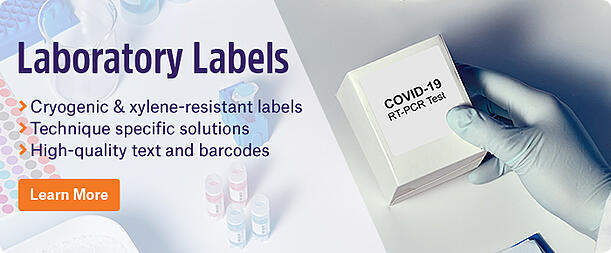
Take it from someone with persistent issues with repetitive stress injuries: proper pipetting technique is essential, no matter your position in the lab. The foundation of any good scientific experiment is predicated on accuracy; without proper pipetting technique, all your measurements would be off, from reagent distribution to sample collection and processing. Here are several tips that can help ameliorate pipetting technique, making it easier and less strenuous to achieve a high level of accuracy and consistency.
Select the right pipette
The first thing to consider prior to performing an experiment is deciding on an appropriate set of pipettes. No, I don’t mean choosing between Gilson and Eppendorf, although everyone certainly has their favorite pipette brand. I mean considering beforehand which pipettes are necessary throughout the workflow, so you’re not rushing around to find the one you need last minute.
Remember, some experiments require a high volume of samples, making using single-channel pipettes impractical. Multichannel pipettes are useful in these situations, though often only for pipetting from solution reservoirs rather than sample tubes. They may also be helpful when transferring volumes from microplate to microplate.
Labeling pipettes may also be helpful prior to pipette selection, especially when marking pipettes for specific tasks, such as handling RNA or for sterile use. It’s recommended to use labels that withstand spraying with alcohols, as well as any other chemicals your pipettes might come in contact with.
Slow & steady technique
Technique is essential to obtaining accurate and consistent measurements. Pipetting should be slow and steady, especially during aspiration. It’s advised to pause for only a brief second after aspirating to ensure the necessary volume of liquid has been delivered into the pipette. When dispensing, it’s important to look for droplets on the side of the tip, which can affect the dispensed volume if they are included. The tip of the pipette should be pressed lightly against the container wall, and dispensing should occur with a somewhat fast motion, pressing down to the second level of the pipette to ensure all liquid has been removed.
Sample setup
How often do you find yourself with liquid in your tip looking last minute to find the right tube to pipette into, only to discover you haven’t labeled it yet? Setting up tubes and other containers prior to experimentation is best practice when it comes to preventing mishaps from occurring. It ensures all sample tubes are available and labeled, so there are no surprises during crucial experiments. To ensure speed and accuracy, it’s recommended that all tubes be clearly identified using printed labels instead of handwriting. Handwriting can be messy, and any smudges, either before, during, or after pipetting, may result in the user no longer being able to identify the tube. Instead, using color coded labels, especially for large sample volumes with different conditions, can help users identify the proper tubes quickly. Combined with a thermal-transfer printout, they all but eliminate the chances of smudging and misidentification.
Find an ergonomic, comfortable position
Finding the right position is crucial to mitigating the risk of repetitive stress injuries (RSI). These types of injuries may seem improbable, but RSI is especially common in lab personnel, more so than in other workers. One study found that RSI prevalence was double that of state employees who did not work in labs and that pipetting for more than 300 hours per year was a risk factor for RSI.1 In another study, there was an elevated risk of RSI among pipette users compared with those who did not use pipettes, with nearly all who pipetted for 60 continuous minutes or more complaining of hand pain.2
When finding an appropriate position for pipetting, sit comfortably, with enough back support to maintain balance and ensure that you’re not straining yourself leaning over. Keep your elbow locked tight, planted on the bench next to your samples, if possible, so that the force you generate is concentrated on aspirating and dispensing liquid instead of keeping your arm steady. Try to avoid standing, as leaning over for long periods can put unnecessary strain on your legs and back, leading to long-term injury.
Take breaks
The best way to avoid an RSI is by taking frequent breaks, especially if you feel any strain in your wrist or fingers. It’s best practice to plan for breaks in your experimental design; that way, there are no surprises. This also helps avoid situations where you might begin to feel strain, even though your experiment requires you to finish pipetting large batches of samples as fast as possible.
Maintain your pipettes
Finally, to keep your pipettes working consistently, it’s worth investing in having them calibrated once every 6 to 12 months, depending on how busy your lab is. If you’re unsure whether your pipettes require calibration, you can always test their accuracy by placing a weigh dish on a scale and pipetting water onto it, assuming that 1 ml of water weighs 1 g. Ideally, this test should be performed before using any pipette for the first time, as well as after heavy use, to prevent inaccuracies from entering your workflow.
LabTAG by GA International is a leading manufacturer of high-performance specialty labels and a supplier of identification solutions used in research and medical labs as well as healthcare institutions.
References:
- Björksten MG, Almby B, Jansson ES. Hand and shoulder ailments among laboratory technicians using modern plunger-operated pipettes. Appl Ergon. 1994;25(2):88-94.
- David G, Buckle P. A questionnaire survey of the ergonomic problems associated with pipettes and their usage with specific reference to work related upper limb disorders. Appl Ergon. 1997;28(4):257-262.



